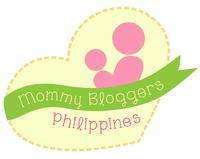Here are the most common questions asked by parents about teaching baby sign language.
Will signing discourage my baby from talking or delay speech development?
When should I start teaching my baby sign language?
When can I expect my baby to start signing back?
We are already speaking two languages with our baby. Will teaching signs confuse him? My baby is 20 months old and has quite a few words.
Is it too late to start the Baby Signs® Program?
Is the Baby Signs® Program based on the American Sign Language (ASL)?
I’m ready to sign with my baby! How do I get started?
1. Will signing discourage my baby from talking or delay speech development?
Absolutely not! In a long-term Baby Signs study funded by the National Institute of Health, it has been found that the exact opposite to be true: Using baby sign language actually makes it easier for babies to learn to talk. Compared to children who are not exposed and not encouraged to sign, babies using baby sign language consistently scored higher on standardized tests of both receptive language development (how much they understand) and expressive language development (how much they can say).
My son Gab, at 1 year and 7 months, he knows the alphabet in print and sign language, knows numbers 1-15 and can sing some nursery rhymes. At 2.5 years old, he started reading. Before he turned 3, he can read books with 15-20 words per page, can tell stories and can count in English, Filipino, Spanish and French.
2. When should I start teaching my baby sign language?
There’s no hard-rule for when is the perfect time for parents to start. It is recommended to start by 8 or 9 months as on this age, babies begin to comprehend words that are very salient to the baby’s life (Milk, Mommy, Daddy, More). Some families start as soon as when their baby is born, just to get into the habit of signing, and that’s just fine. After all, we talk to babies from the day they’re born, or even earlier. We just don’t worry when they don’t answer!
We began modeling signs with our son, Gab, when he was 6 months old. We didn’t get a response at the same month as expected but we consistently do the signs for him.
3. When can I expect my baby to start signing back?
This depends on when you start and varies greatly from one baby to another. It depending on the child’s interest in communicating, development of related skills (memory, imitation, attention), how frequently and consistently parents and caregivers model and use the signs. A typical range for first clear signs would be around 10 – 14 months.
Gab was able to do the sign on his own at 8 months. His first sign is “Milk”. As I was breastfeeding him, I do the sign for milk before I start nursing, make the milk sign again during feeding, and doing the sign right after he feeds. Repetition and consistency is the key for learning.
4. We are already speaking two languages with our baby. Will teaching signs confuse him?
The truth is that, rather than confusing your bilingual child, adding signs makes the child’s job easier, not harder. When children first start learning about language, they quite naturally look for one-to-one correspondences between words and the objects (or actions) they label. By adding a sign to the mix so that the same visual symbol (sign) accompanies both words (“milk” and “leche” for example), parents make the job of connecting the object with the meanings of both words much easier for babies.
For us, it’s not just 2 but 3 languages – Ilonggo or Hiligaynon (as our native dialect, spoken most of the time at home), English (as second language, as all of the books we have are in English), and Filipino (language use to interact when we go outside and meet friends and neighbors). There’s a study that showed that bilingual kids are better in multitasking than monolingual ones. You can read more here: Gab will be Quadlingual. Baby sign language helped us smooth the road to understanding and speaking the different languages.
5. My baby is 20 months old and has quite a few words. Is it too late to start the Baby Signs® Program?
Even those babies with 50 – 100 word vocabularies still find some words too hard to say (caterpillar, crocodile). As long as that’s the case – no matter what the child’s age – it has been found that sign equivalents are welcomed.
6. Is the Baby Signs® Program based on the American Sign Language (ASL)?
The Baby Signs® Program are based on ASL. The program has incorporated slightly modified ASL signs to make it baby-friendly, since babies’ fine motor skills are not yet developed. Parents have the option on what signs to choose that will work for them to understand each other while speech is not yet evident.
7. I’m ready to sign with my baby! How do I get started?
Learning how to sign is easy! Just attend a Baby Signs® Parent Workshop and you will get tools, tips and learn the most effective ways to teach your baby sign language. Contact US (Baby Talking Hands) or visit Baby Talking Hands in face book to get started on your amazing Baby Signs® adventure and communicate with your baby before your baby can talk!





2 comments
Pingback: Proven Benefits of Baby Sign Language - Life of Que
Pingback: Baby Sign Language Philippines Workshop 2014 | Class, Schedule - Life of Que